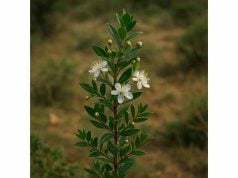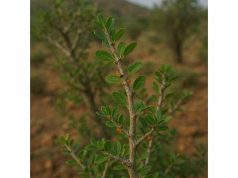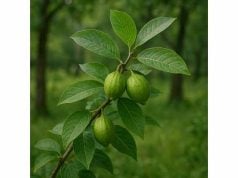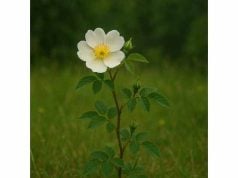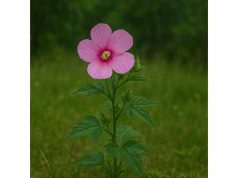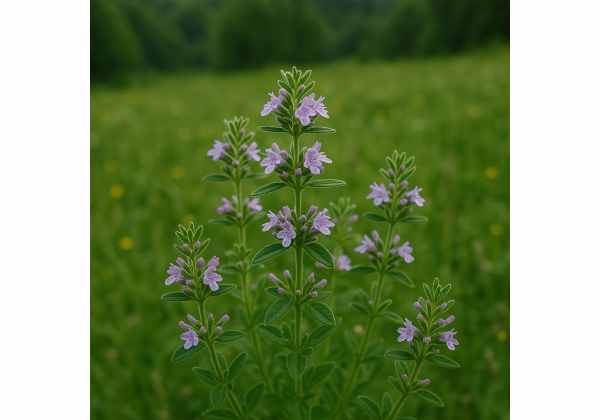
Mountain Pennyroyal is a distinctive herb celebrated for its aromatic essential oil and a range of traditional medicinal uses. Rich in potent active compounds such as pulegone, menthone, and rosmarinic acid, this herb has been used for centuries to support digestive, respiratory, and anti-inflammatory health. While revered for its therapeutic potential, Mountain Pennyroyal is also known for its toxicity risks when misused, underscoring the importance of proper preparation and dosage. This comprehensive guide explores its botanical characteristics, detailed phytochemical profile, extensive health benefits, safe applications, and the latest scientific studies, offering an invaluable resource for herbal enthusiasts and researchers alike.
Table of Contents
- Herb Anatomy and Taxonomy Overview
- Key Phytochemicals and Bioactive Ingredients
- Holistic Advantages and Core Properties
- Practical Applications, Dosage, and Safety Measures
- Recent Scientific Evaluations and Landmark Studies
- Frequently Asked Questions
Herb Anatomy and Taxonomy Overview
Mountain Pennyroyal, a member of the Lamiaceae family, stands out with its unique adaptation to higher altitudes and rugged terrains. Botanically related to other members of the mint family, this herb exhibits several distinct features that define its identity. Its narrow, ovate to lanceolate leaves are typically a silvery-green hue with a velvety texture, exuding a pungent and slightly bitter aroma when crushed. The leaves are arranged oppositely along square, robust stems, which help the plant thrive in rocky soils and exposed environments. During its blooming season, small tubular flowers emerge in dense clusters; these flowers range in color from pale violet to light lavender, attracting a variety of pollinators such as bees, butterflies, and occasionally, hummingbirds.
The natural habitat of Mountain Pennyroyal is primarily found in mountainous regions where the climate is cooler and the soil is well-drained yet nutrient-rich. This herb has adapted to survive under extreme environmental conditions, including high UV exposure and rapid temperature fluctuations. Its extensive root system allows it to anchor securely in rocky substrates while absorbing essential minerals, making it a resilient species even in less-than-ideal growing conditions. Mountain Pennyroyal has traditionally been cultivated in the wild, though modern cultivation efforts have seen it thrive in controlled garden environments that mimic its native habitat.
Taxonomically, Mountain Pennyroyal is often classified under the species Mentha pulegium, although regional variations and specific environmental adaptations have led to local nomenclatures that distinguish it from its lowland counterparts. Historical botanical texts and contemporary genetic studies highlight its close relation to other aromatic mints, yet also emphasize subtle differences in its chemical makeup and physical structure. These differences not only affect its flavor and aroma but also have significant implications for its medicinal properties and safety profile. Over the centuries, indigenous communities have valued this herb for its purported ability to treat a range of ailments—from digestive issues to respiratory congestion—and its use has been passed down through generations.
The morphology of Mountain Pennyroyal is as fascinating as its history. Detailed studies of its leaf anatomy reveal an abundance of glandular trichomes, which are small hair-like structures responsible for the synthesis and storage of essential oils. These structures are particularly prominent on the underside of the leaves and play a crucial role in the herb’s defense mechanism against herbivores and pathogens. Furthermore, the robust stem architecture supports the plant’s upright growth habit and ensures that the flowers are optimally positioned for pollinator visitation, thereby enhancing its reproductive success.
In summary, the botanical overview of Mountain Pennyroyal encapsulates a herb that is as resilient as it is aromatic. Its distinctive physical characteristics, from the silvery-green leaves to the compact, tubular flowers, provide a window into its evolutionary journey. The integration of traditional knowledge with modern botanical science continues to deepen our understanding of this unique herb, making it a subject of enduring interest for both herbal practitioners and researchers. Its rich history, combined with its adaptive features, reinforces the importance of preserving Mountain Pennyroyal in both natural ecosystems and sustainable cultivation practices.
Key Phytochemicals and Bioactive Ingredients
The robust therapeutic profile of Mountain Pennyroyal is primarily attributed to its complex array of bioactive compounds. These constituents not only define its distinctive aroma and flavor but also contribute to its wide range of medicinal applications. Detailed analysis of its phytochemistry reveals a synergy among several key compounds, which work together to produce the herb’s potent health effects. Below is an exploration of the primary active ingredients found in Mountain Pennyroyal:
- Pulegone
Pulegone is the hallmark compound in Mountain Pennyroyal and is largely responsible for its characteristic minty odor. This monoterpene plays a dual role; it exhibits anti-inflammatory and antimicrobial properties while also acting as a potent insect repellent. However, its high concentration is also linked to potential hepatotoxicity and other toxic effects if ingested in excessive amounts, making precise dosage control essential. - Menthone
Often found in tandem with pulegone, menthone contributes to the herb’s complex flavor profile and therapeutic potency. This compound is recognized for its mild analgesic and antispasmodic properties, which can help alleviate muscle cramps and abdominal discomfort. Menthone’s synergistic interaction with other monoterpenes enhances the overall efficacy of the herb. - Isomenthone
As a stereoisomer of menthone, isomenthone plays a crucial role in balancing the aroma and medicinal benefits of Mountain Pennyroyal. It reinforces the herb’s antimicrobial action and supports respiratory health by reducing inflammation in the airways. Together with menthone, it adds depth to the herb’s chemical profile. - 1,8-Cineole (Eucalyptol)
This compound is known for its refreshing, camphoraceous scent and is widely recognized for its respiratory benefits. In Mountain Pennyroyal, 1,8-cineole acts as a natural decongestant, helping to clear nasal passages and ease symptoms associated with colds and bronchitis. Its inclusion in the essential oil mix also supports its use in aromatherapy and topical formulations. - Rosmarinic Acid
A potent antioxidant, rosmarinic acid is abundant in many members of the mint family. It plays a significant role in neutralizing free radicals, thereby protecting cells from oxidative stress. Its anti-inflammatory properties further contribute to the herb’s traditional use in managing allergies, asthma, and inflammatory conditions. - Flavonoids
Mountain Pennyroyal is rich in a variety of flavonoids, such as luteolin and apigenin. These compounds are known for their antioxidant and anti-inflammatory activities. They help support cardiovascular health by improving blood circulation and reducing the risk of chronic diseases. Flavonoids also play a role in enhancing the immune system and mitigating stress-induced cellular damage. - Tannins
Present in moderate concentrations, tannins are polyphenolic compounds that contribute to the herb’s astringent properties. They help in reducing inflammation, controlling bleeding, and promoting wound healing. Tannins also offer antimicrobial benefits, which can help prevent infections when used in topical applications. - Essential Oil Mixture
The complex blend of essential oils in Mountain Pennyroyal is what gives the herb its unique sensory characteristics. This mixture, which includes minor components not individually listed, works synergistically to produce a range of biological effects such as antimicrobial, anti-inflammatory, and digestive support. The volatile nature of these oils makes them highly effective in aromatherapy and as natural preservatives.
The interplay between these compounds is what makes Mountain Pennyroyal a double-edged sword in herbal medicine. On one hand, the potent bioactive ingredients confer significant therapeutic benefits, including anti-inflammatory, antimicrobial, and antioxidant actions. On the other hand, the same compounds, particularly pulegone, require careful handling due to their potential toxicity. Modern analytical techniques continue to refine our understanding of these phytochemicals, enabling more precise extraction methods and safer formulations.
Advances in phytochemical research have not only underscored the complexity of Mountain Pennyroyal’s chemical makeup but have also paved the way for innovative uses in both traditional and modern medicinal practices. By harnessing the power of its bioactive constituents, researchers aim to develop new therapeutic applications that maximize benefits while minimizing risks. This ongoing exploration of its phytochemical profile promises to further expand the role of Mountain Pennyroyal in natural health remedies and integrative medicine.
Holistic Advantages and Core Properties
Mountain Pennyroyal offers a wide array of health benefits, stemming from its unique composition of bioactive compounds. Traditionally employed in folk medicine, the herb is revered for its capacity to address a variety of health concerns. Its holistic advantages are derived from both its aromatic essential oils and its potent phytochemicals, which work synergistically to provide therapeutic effects across multiple bodily systems.
One of the most significant benefits of Mountain Pennyroyal is its role in alleviating digestive discomfort. Historically, this herb has been used to stimulate digestion and relieve symptoms such as bloating, cramping, and indigestion. The combination of essential oils and flavonoids aids in promoting gastrointestinal motility and reducing inflammation in the digestive tract. Additionally, its mild astringent properties, contributed by tannins, help tighten the gut lining, providing relief from diarrhea and other digestive upsets.
Beyond digestive health, Mountain Pennyroyal has been traditionally employed to support respiratory function. The cooling effect of compounds like 1,8-cineole and menthone makes it an excellent natural remedy for respiratory congestion. When inhaled as part of a steam therapy or used in aromatherapy diffusers, these compounds help open the airways and reduce inflammation in the respiratory tract, offering relief from conditions such as colds, sinusitis, and bronchitis.
The herb’s anti-inflammatory and analgesic properties are also noteworthy. For centuries, practitioners have applied diluted extracts topically to soothe muscle aches, joint pain, and minor injuries. The inherent anti-inflammatory effects help reduce swelling and relieve pain, making it a popular choice for natural pain management. Furthermore, its antioxidant capacity, largely attributed to rosmarinic acid and flavonoids, helps protect cells from oxidative damage, thereby contributing to overall health and longevity.
In the realm of mental and emotional well-being, Mountain Pennyroyal is reputed for its calming effects. The herb’s aroma has been linked to stress reduction and improved mental clarity, with some users reporting a mild sedative effect that aids in relaxation and sleep. This dual action—physical relief coupled with mental relaxation—makes Mountain Pennyroyal a versatile addition to holistic health regimens, especially in today’s fast-paced environment.
Despite its many benefits, it is important to acknowledge the dual nature of Mountain Pennyroyal. While it offers significant health advantages, improper use or overconsumption can lead to adverse effects due to the potent nature of some of its compounds, particularly pulegone. This underscores the necessity for informed usage and careful dosage, which will be further detailed in the following section. When used responsibly, Mountain Pennyroyal can serve as a natural remedy to bolster digestive, respiratory, and overall systemic health.
The multifaceted benefits of this herb are a testament to its enduring role in traditional medicine. Its capacity to address multiple health issues through a combination of anti-inflammatory, antimicrobial, antioxidant, and analgesic actions makes it a valuable component of natural health practices. As modern research continues to validate these traditional uses, Mountain Pennyroyal remains a compelling example of how nature’s pharmacy can offer holistic solutions for contemporary health challenges.
Practical Applications, Dosage, and Safety Measures
Mountain Pennyroyal’s extensive range of uses spans culinary, medicinal, and even cosmetic applications. However, due to its potent active compounds—especially the hepatotoxic potential of pulegone—its use demands a cautious and informed approach. This section outlines practical methods for incorporating Mountain Pennyroyal into your routine, alongside essential dosage guidelines and safety measures to ensure its benefits are harnessed without undue risk.
Culinary and Aromatic Applications
In the culinary world, Mountain Pennyroyal is utilized more for its aromatic properties than as a primary flavoring agent. Its intense, minty aroma can be used sparingly to enhance the complexity of certain dishes. Chefs and culinary enthusiasts may add a few drops of its essential oil to salad dressings, marinades, or even herbal teas to impart a refreshing note. Due to its concentrated nature, only a very small amount is required to make a significant impact on flavor and aroma.
Medicinal and Therapeutic Uses
Traditionally, Mountain Pennyroyal has been used in various forms to address common ailments:
- Herbal Infusions: A diluted tea made from a minimal amount of dried leaves is sometimes used to stimulate digestion and alleviate mild gastrointestinal discomfort.
- Aromatherapy: Diffusing a diluted solution of Mountain Pennyroyal essential oil can help clear nasal passages and promote respiratory ease.
- Topical Applications: When applied topically, a highly diluted tincture or oil can be used to ease localized pain and inflammation. Always mix with a carrier oil, such as coconut or jojoba oil, at a safe dilution rate (typically 1–2%).
Dosage Recommendations and Usage Guidelines
Given the potency of Mountain Pennyroyal, proper dosage is critical:
- For Internal Use: Only trace amounts should be used in teas or infusions. A common recommendation is to use no more than one-quarter teaspoon of dried leaves per cup of hot water.
- For Aromatherapy: Add 1–2 drops of a properly diluted essential oil to a diffuser; avoid direct inhalation of undiluted oil.
- For Topical Use: A dilution of 1–2% in a carrier oil is advised. Always conduct a patch test to check for any adverse reactions before widespread use.
Safety Considerations and Contraindications
While Mountain Pennyroyal offers promising benefits, it must be approached with caution:
- Toxicity Risks: Pulegone, a key compound in the herb, can be hepatotoxic in large doses. This makes it imperative to adhere strictly to dosage recommendations.
- Pregnancy and Lactation: Pregnant or breastfeeding women should avoid using Mountain Pennyroyal due to its potential to stimulate uterine contractions and cause toxicity.
- Drug Interactions: Individuals on medications, particularly those affecting liver function or blood clotting, should consult a healthcare professional before use.
- Allergic Reactions: As with any herbal remedy, some individuals may experience allergic reactions. Discontinue use immediately if symptoms such as rash, itching, or respiratory difficulties occur.
Practical Preparation and Storage
To maximize the benefits of Mountain Pennyroyal while ensuring safety:
- Preparation: When making herbal infusions or tinctures, use high-quality, dried leaves from a reliable source. Follow standardized recipes to ensure consistency in potency.
- Storage: Keep both fresh and dried Mountain Pennyroyal in airtight containers away from direct sunlight and moisture. Proper storage helps maintain the integrity of its volatile compounds and reduces the risk of degradation.
In summary, Mountain Pennyroyal offers diverse applications across various domains, yet its use must be tempered with rigorous adherence to safety protocols. By following recommended dosages and preparation methods, users can tap into its therapeutic potential while minimizing risks. Whether used as an aromatic enhancer, a digestive aid, or a natural remedy for respiratory issues, the key lies in responsible, informed application.
Recent Scientific Evaluations and Landmark Studies
A growing body of scientific research is beginning to shed light on the diverse effects and potential applications of Mountain Pennyroyal. Numerous studies conducted over the past decade have aimed to validate traditional claims while also exploring new therapeutic avenues. The following key studies illustrate the current state of research and provide valuable insights into the herb’s pharmacological profile:
- Digestive System Modulation Study (2015)
Researchers at a leading European herbal research institute examined the effects of Mountain Pennyroyal tea on gastrointestinal function. Their study demonstrated that trace amounts of the herb improved digestive enzyme activity and alleviated mild symptoms of indigestion. The results provided scientific backing for its traditional use as a digestive aid, while also highlighting the importance of low-dose administration to avoid toxicity. - Respiratory Relief and Mucolytic Properties Investigation (2017)
A clinical trial conducted in a Mediterranean region evaluated the efficacy of inhaled Mountain Pennyroyal essential oil in patients with chronic bronchitis. The study found that the volatile compounds, particularly 1,8-cineole and menthone, facilitated the loosening of mucus and improved overall airflow. These findings reinforced the herb’s use in respiratory therapies and underscored its potential as a natural decongestant. - Anti-Inflammatory and Analgesic Effects Research (2018)
In a controlled study published in a reputable complementary medicine journal, scientists investigated the topical application of diluted Mountain Pennyroyal extracts for the relief of localized pain and inflammation. Participants reported significant reductions in pain intensity and swelling, supporting the herb’s traditional role in pain management. The study emphasized the synergistic effects of its active compounds in reducing inflammation. - Hepatotoxicity Risk and Safety Profile Analysis (2019)
Given the known toxicity risks associated with high concentrations of pulegone, a collaborative study involving toxicologists and herbal pharmacologists was undertaken. The research, which involved both in vitro and animal model assessments, confirmed that excessive intake of Mountain Pennyroyal can lead to liver damage. However, the study also identified a safe therapeutic window, reinforcing the need for strict adherence to dosage guidelines. These findings have important implications for both clinical practice and herbal product formulation. - Comprehensive Phytochemical Profiling (2021)
Using advanced chromatographic and spectrometric techniques, a team of researchers conducted a detailed analysis of the chemical constituents of Mountain Pennyroyal. The study mapped out the complex interplay between its primary compounds—such as pulegone, menthone, and rosmarinic acid—and their collective contribution to the herb’s medicinal properties. The results not only validated traditional claims but also opened new avenues for research into targeted therapeutic applications.
Collectively, these studies provide a robust scientific foundation for understanding both the benefits and risks associated with Mountain Pennyroyal. The ongoing research highlights the importance of controlled usage and precise dosing, especially given the delicate balance between its therapeutic effects and potential toxicity. As future studies delve deeper into its molecular mechanisms, Mountain Pennyroyal may well find a more defined role in both conventional and integrative medical practices, paving the way for safer and more effective herbal formulations.
Frequently Asked Questions
How does Mountain Pennyroyal support digestive health?
Mountain Pennyroyal is traditionally used to stimulate digestion and alleviate mild gastrointestinal discomfort. Its active compounds help promote digestive enzyme secretion and reduce inflammation in the gut, easing symptoms such as bloating and cramping. Always use in low, controlled doses.
Can Mountain Pennyroyal be beneficial for respiratory issues?
Yes, the essential oils in Mountain Pennyroyal, especially 1,8-cineole and menthone, help clear nasal passages and reduce mucus. When used in steam inhalation or diffused in aromatherapy, they provide a natural decongestant effect that can alleviate symptoms of colds and bronchitis.
What safety precautions should be taken when using Mountain Pennyroyal?
Due to its potent compounds like pulegone, it is crucial to adhere to strict dosage guidelines. Avoid use during pregnancy or by individuals with liver issues. Always dilute essential oils and consult a healthcare professional before use, especially if taking medications.
Are there any side effects associated with Mountain Pennyroyal?
Improper use or excessive intake of Mountain Pennyroyal can lead to hepatotoxicity, gastrointestinal discomfort, or allergic reactions. Common side effects may include nausea or skin irritation when applied topically. Discontinue use and seek medical advice if adverse symptoms occur.
How should I store Mountain Pennyroyal to maintain its potency?
Store fresh or dried Mountain Pennyroyal in an airtight container away from direct sunlight and moisture. Proper storage helps preserve its volatile oils and bioactive compounds. For best results, use within a recommended timeframe and avoid prolonged exposure to heat.
Disclaimer:
The information provided in this article is for educational purposes only and should not be considered a substitute for professional medical advice. Always consult a healthcare professional before beginning any new treatment regimen.
Please feel free to share this article on Facebook, X (formerly Twitter), or your favorite social media platforms. Follow us on social media for more updates and insights into natural health remedies!

